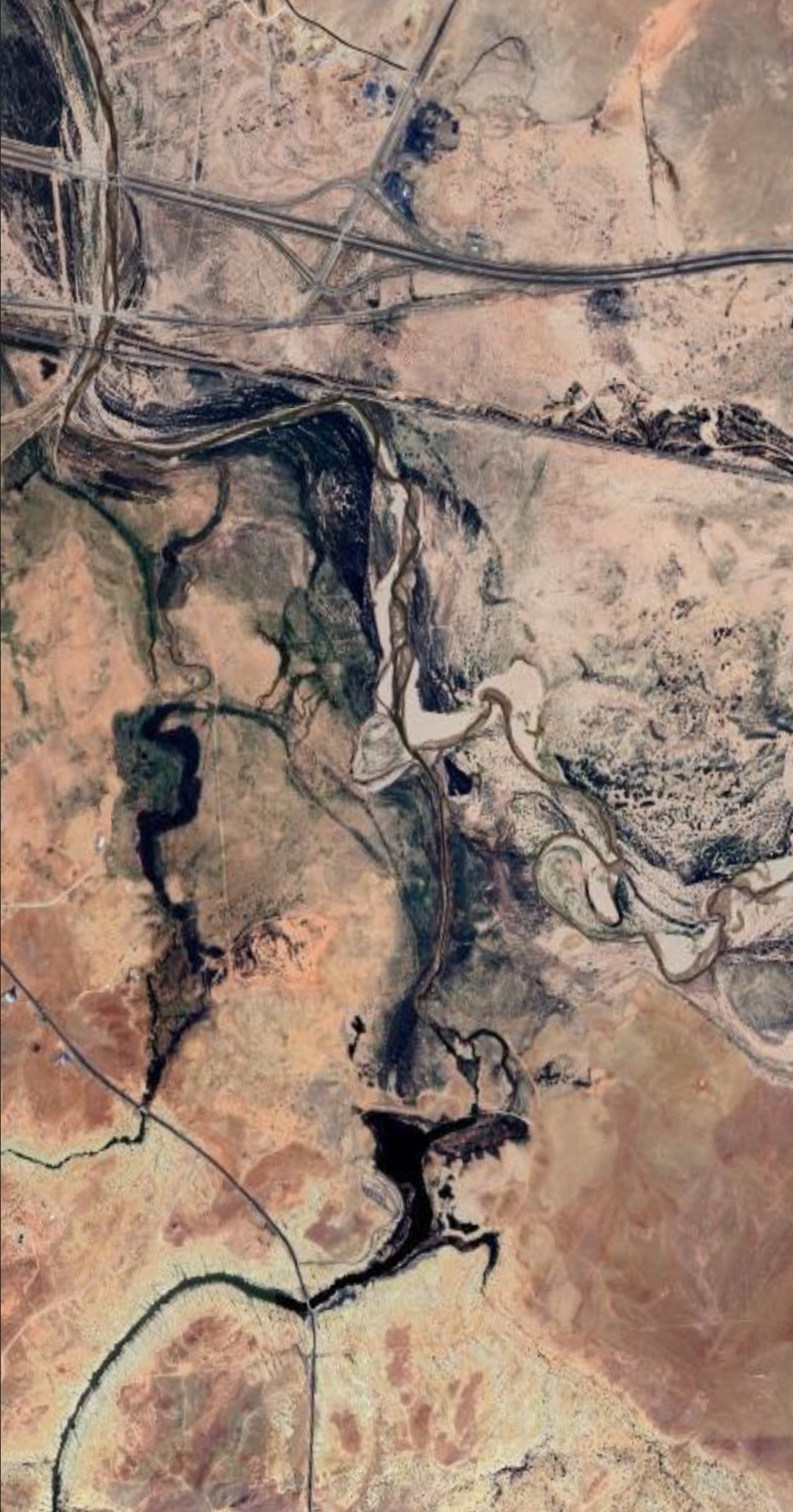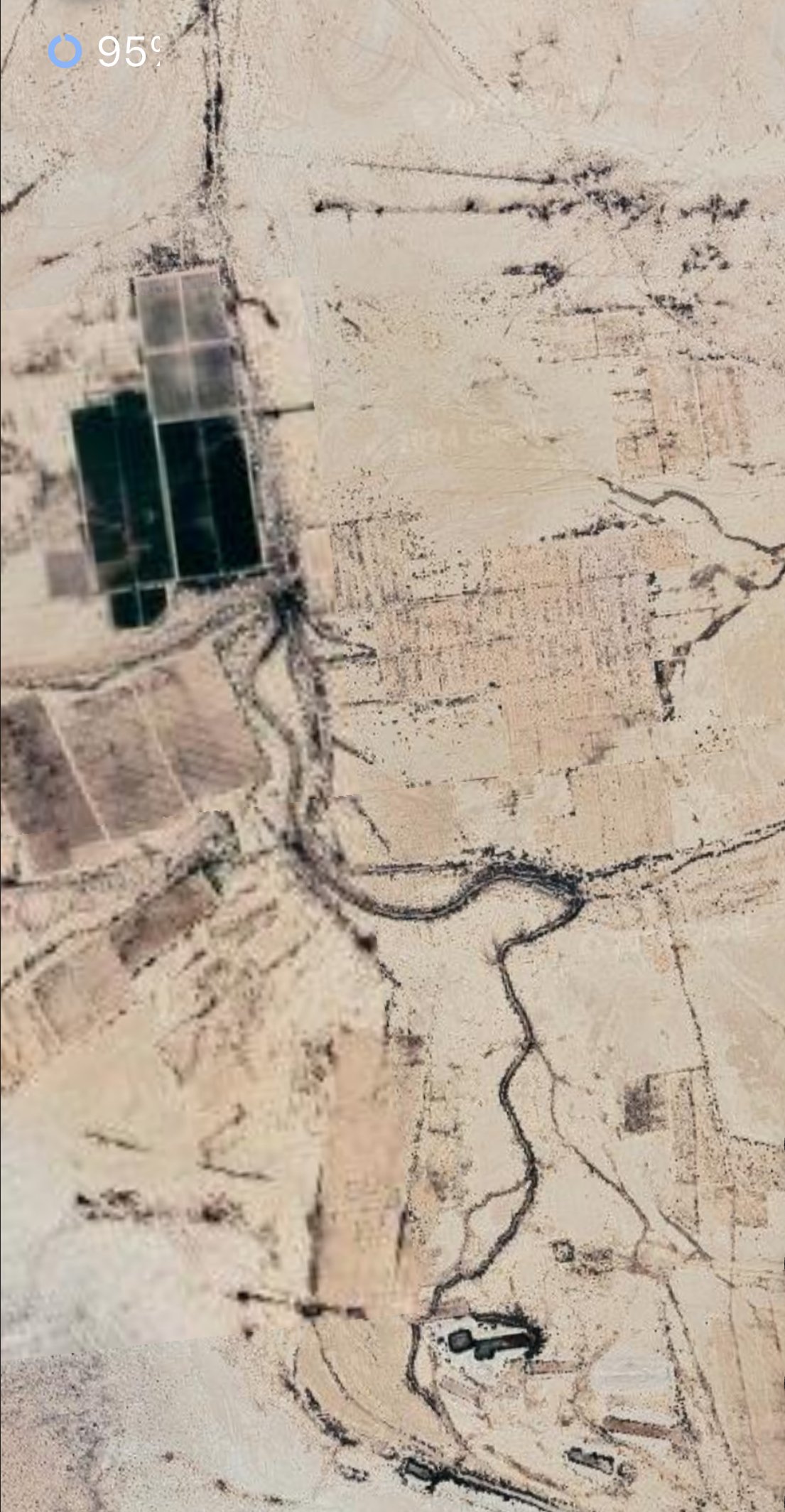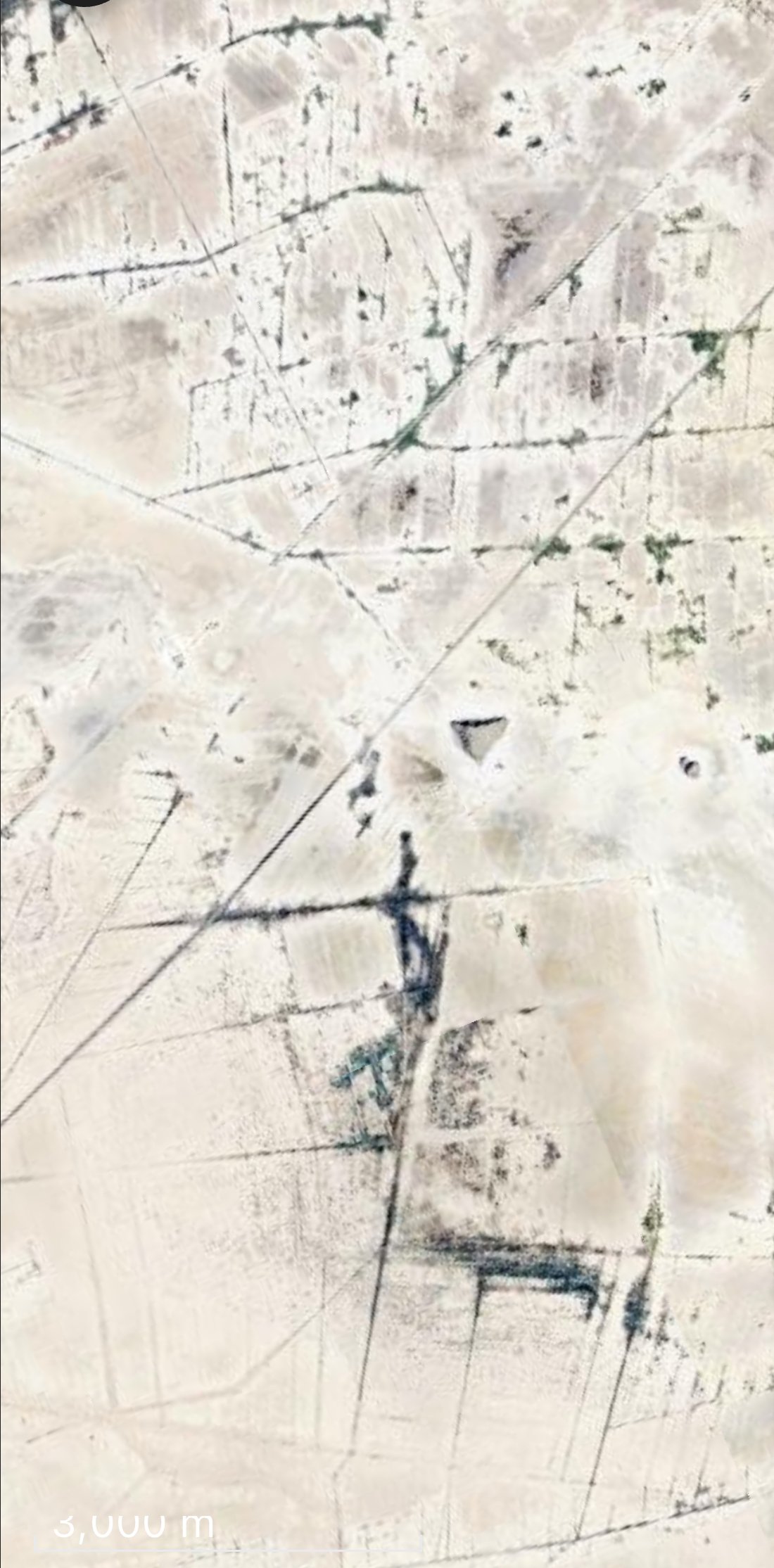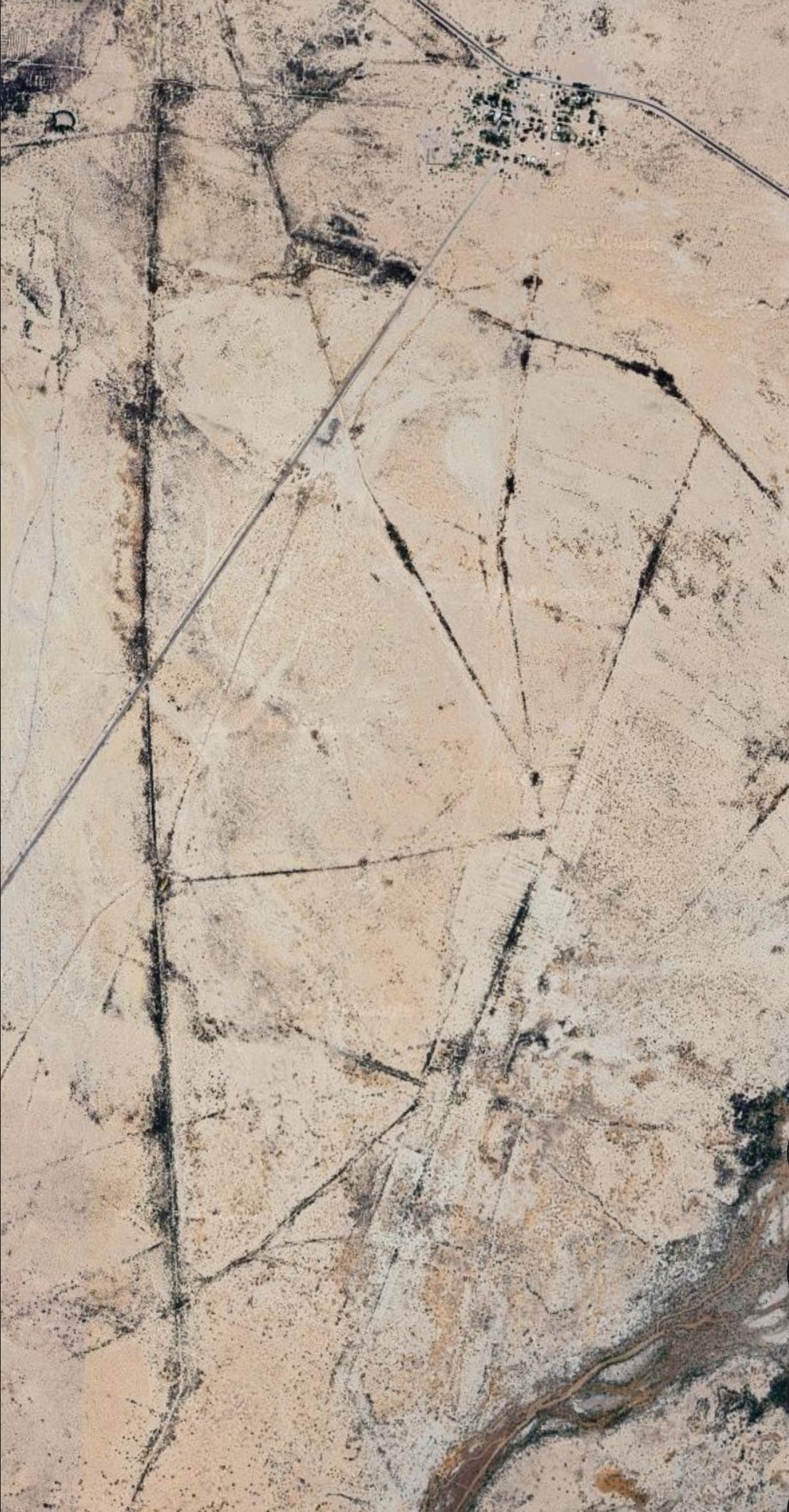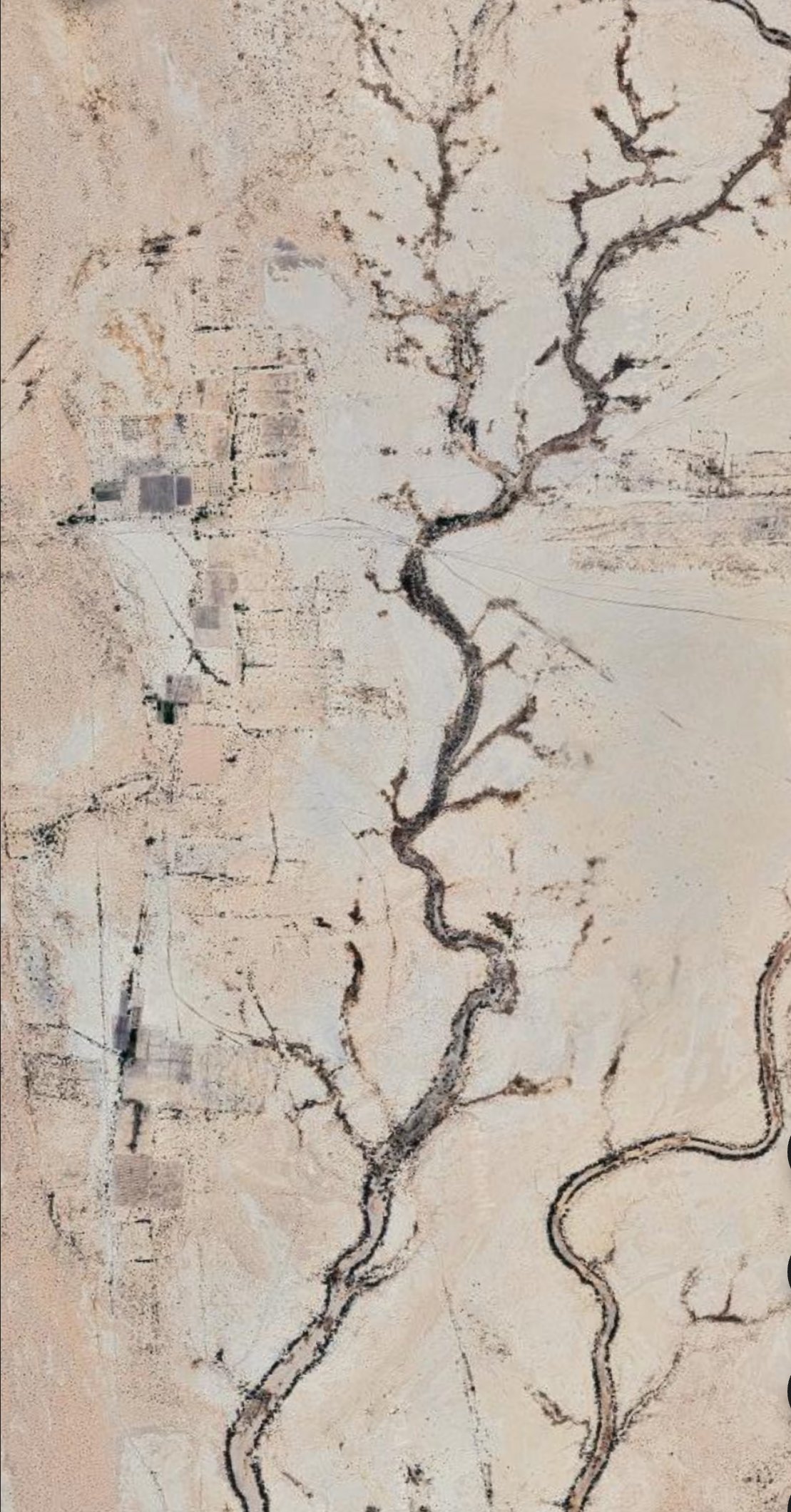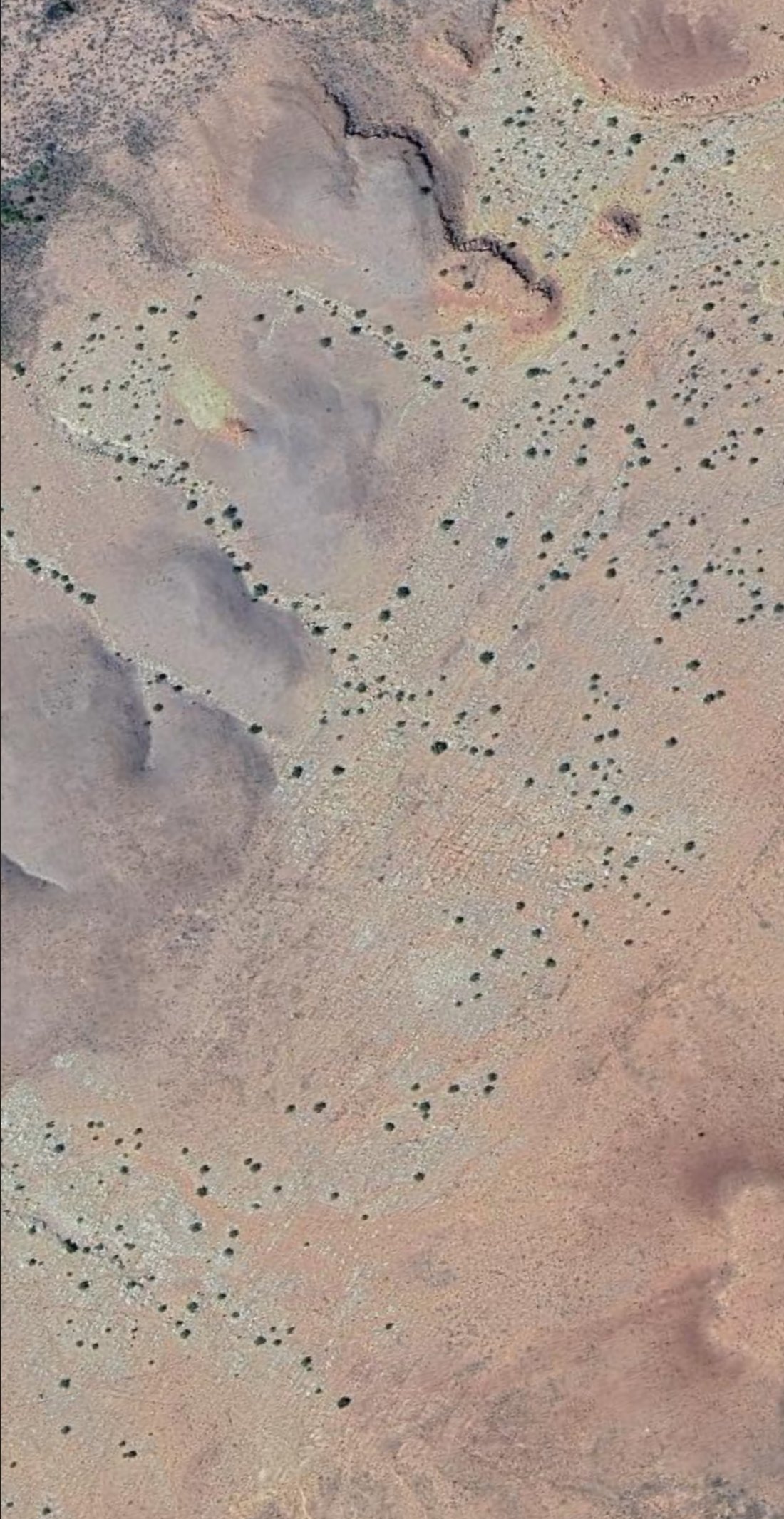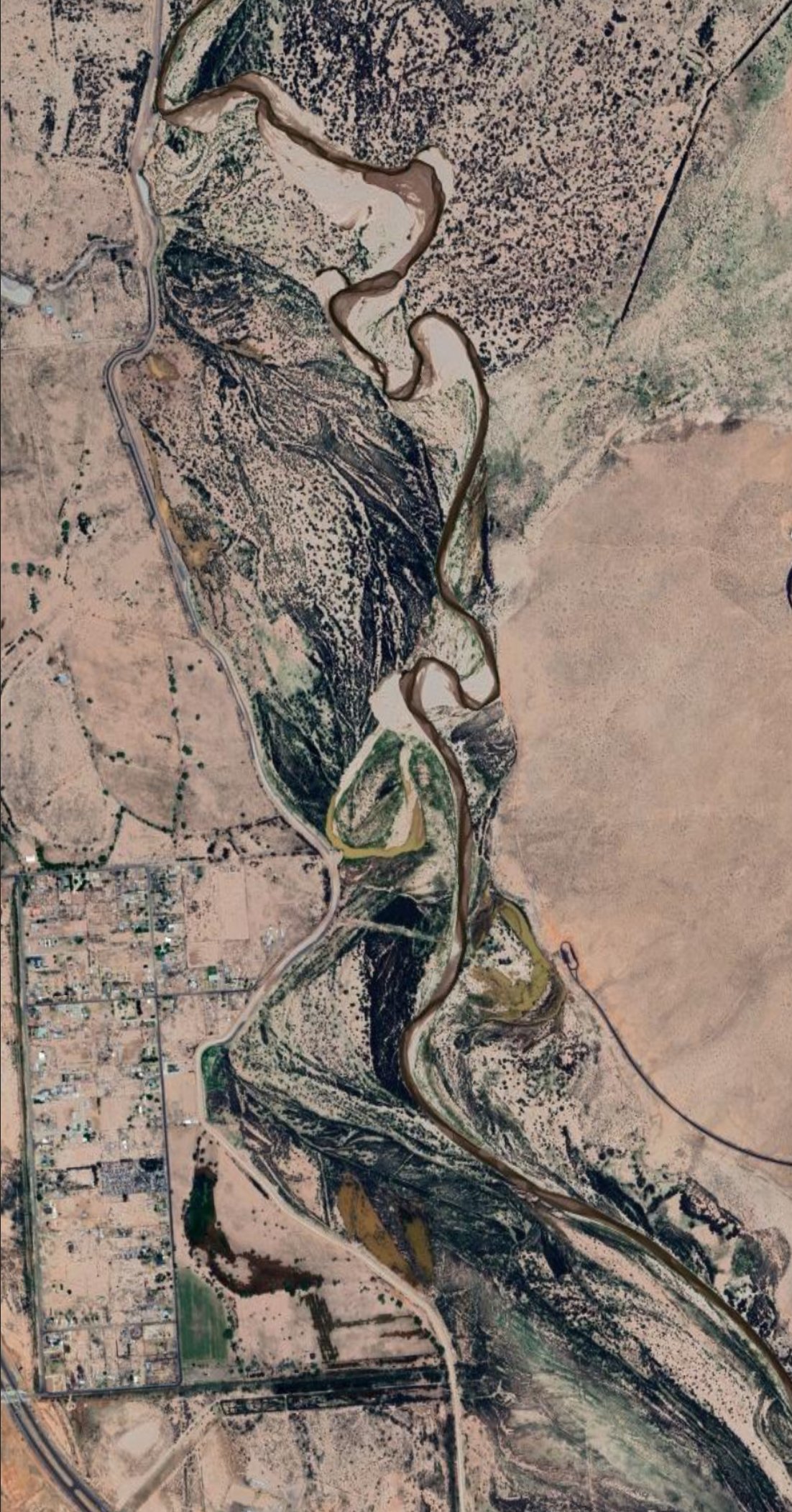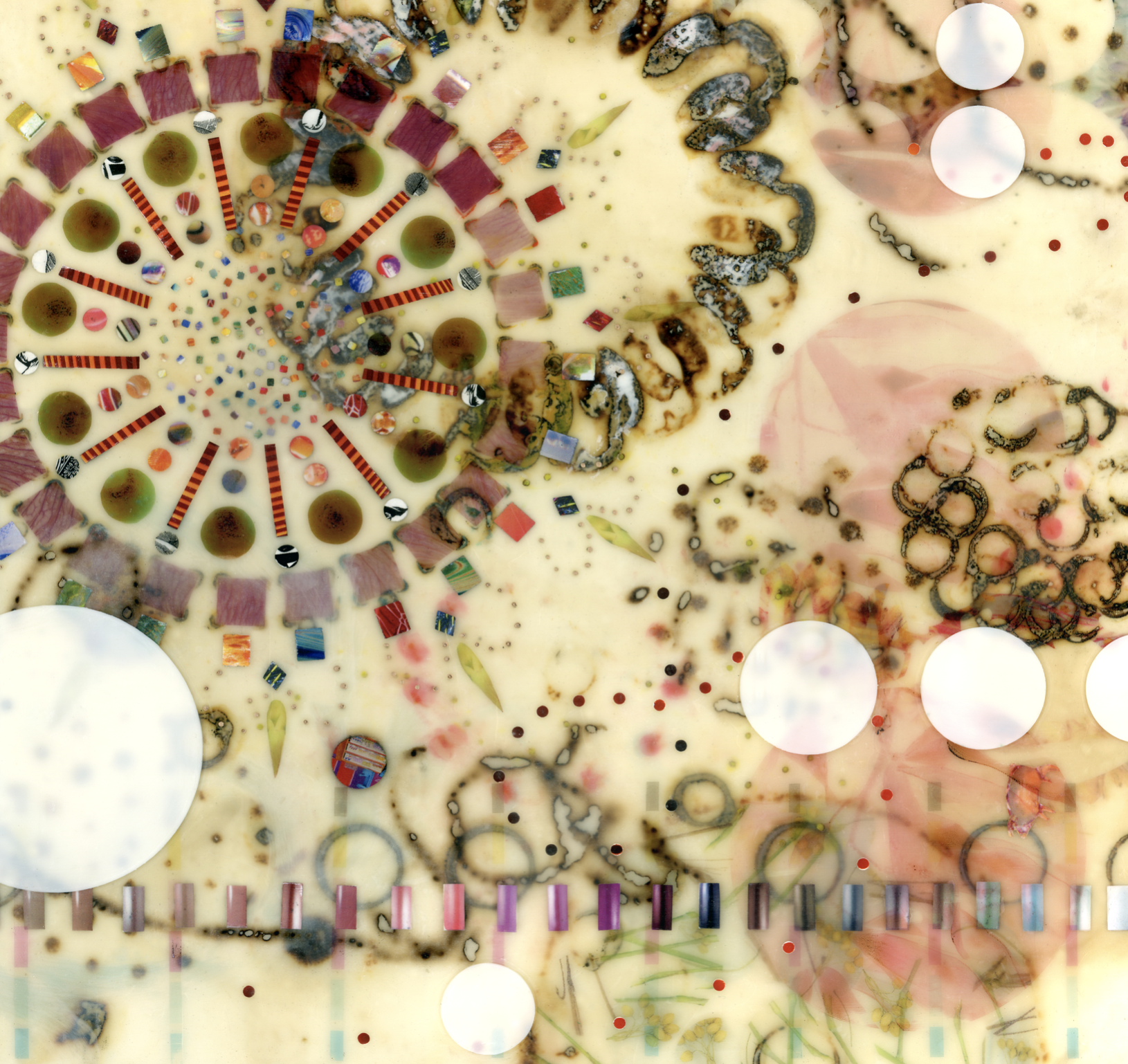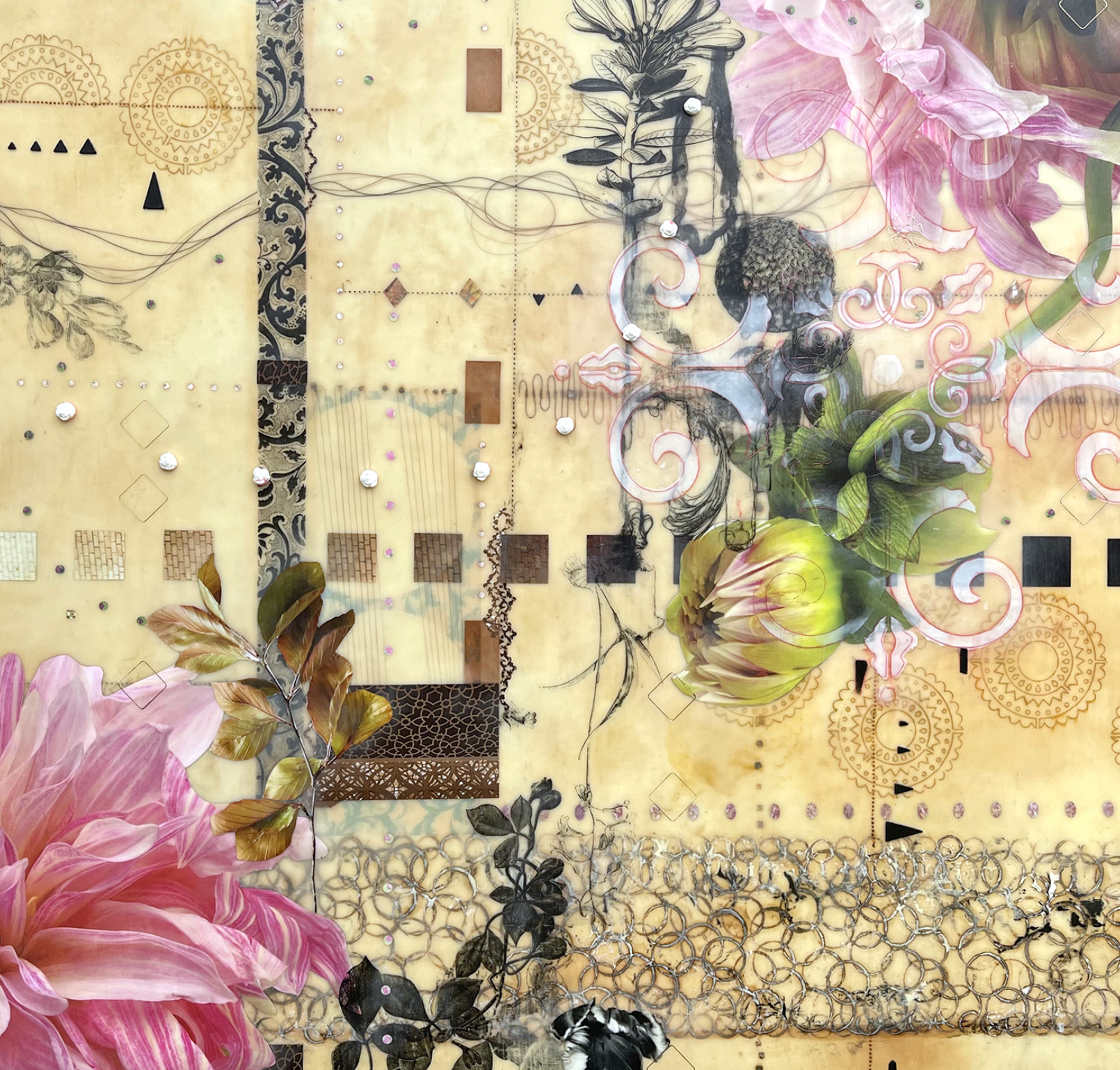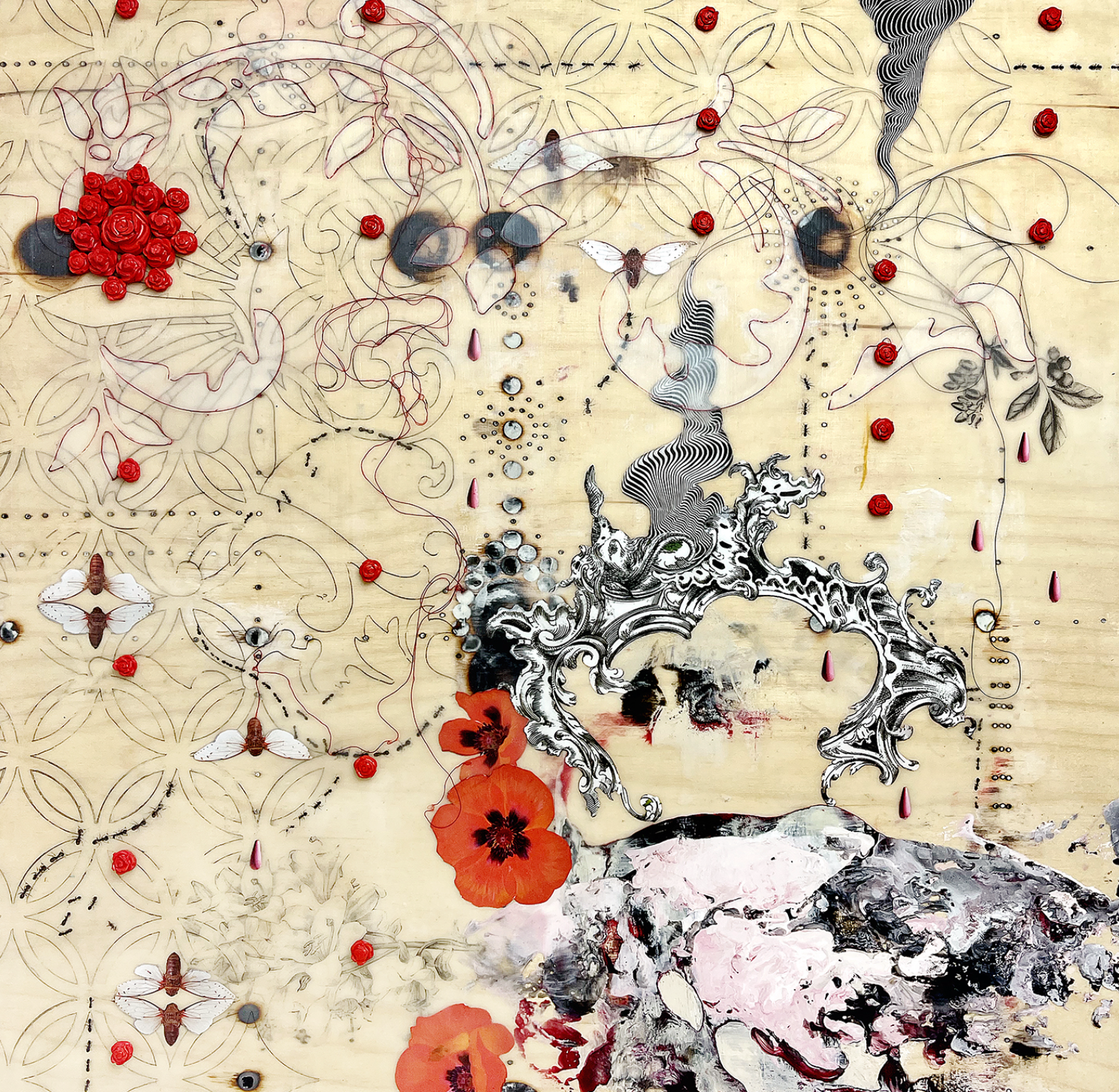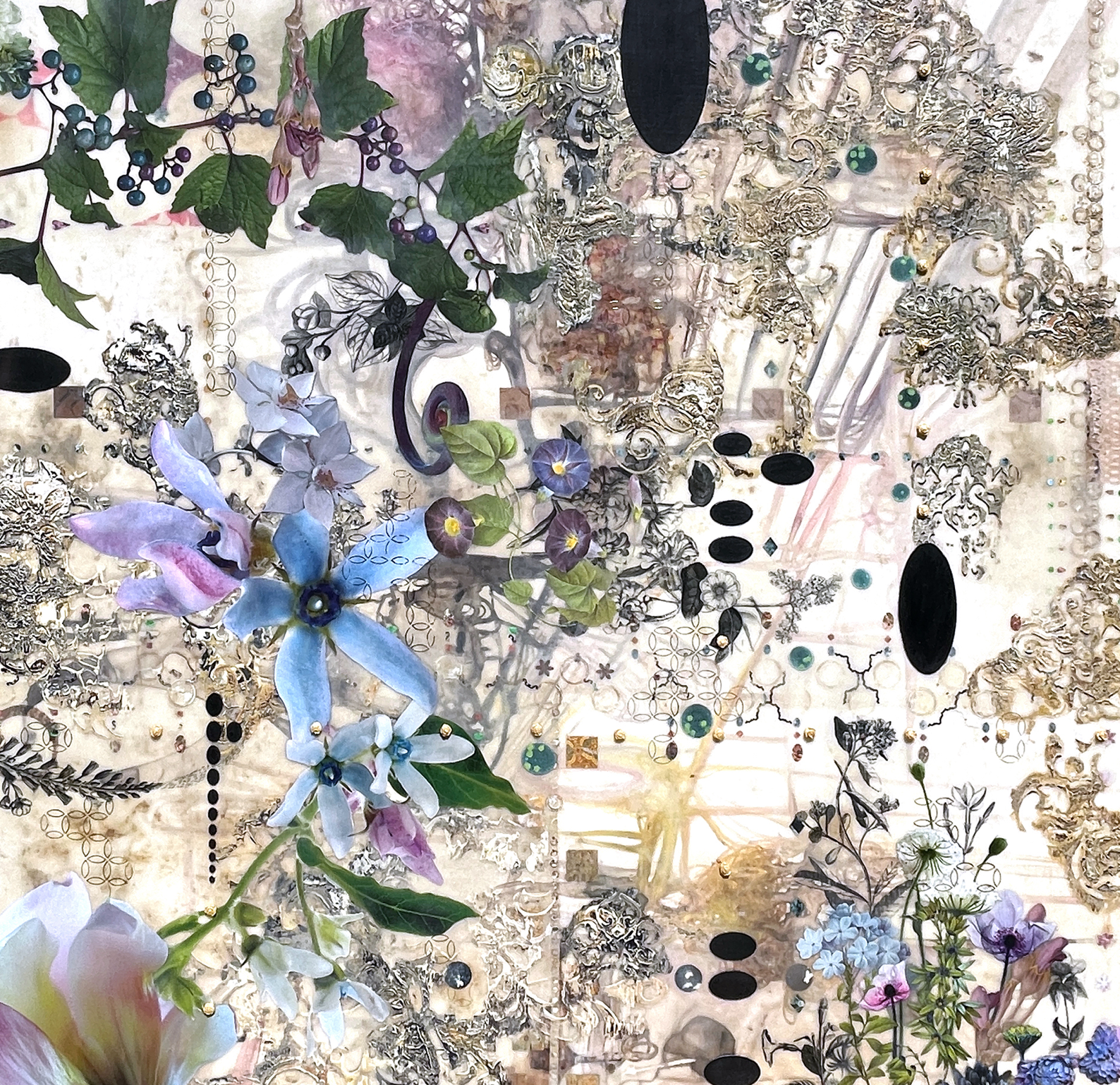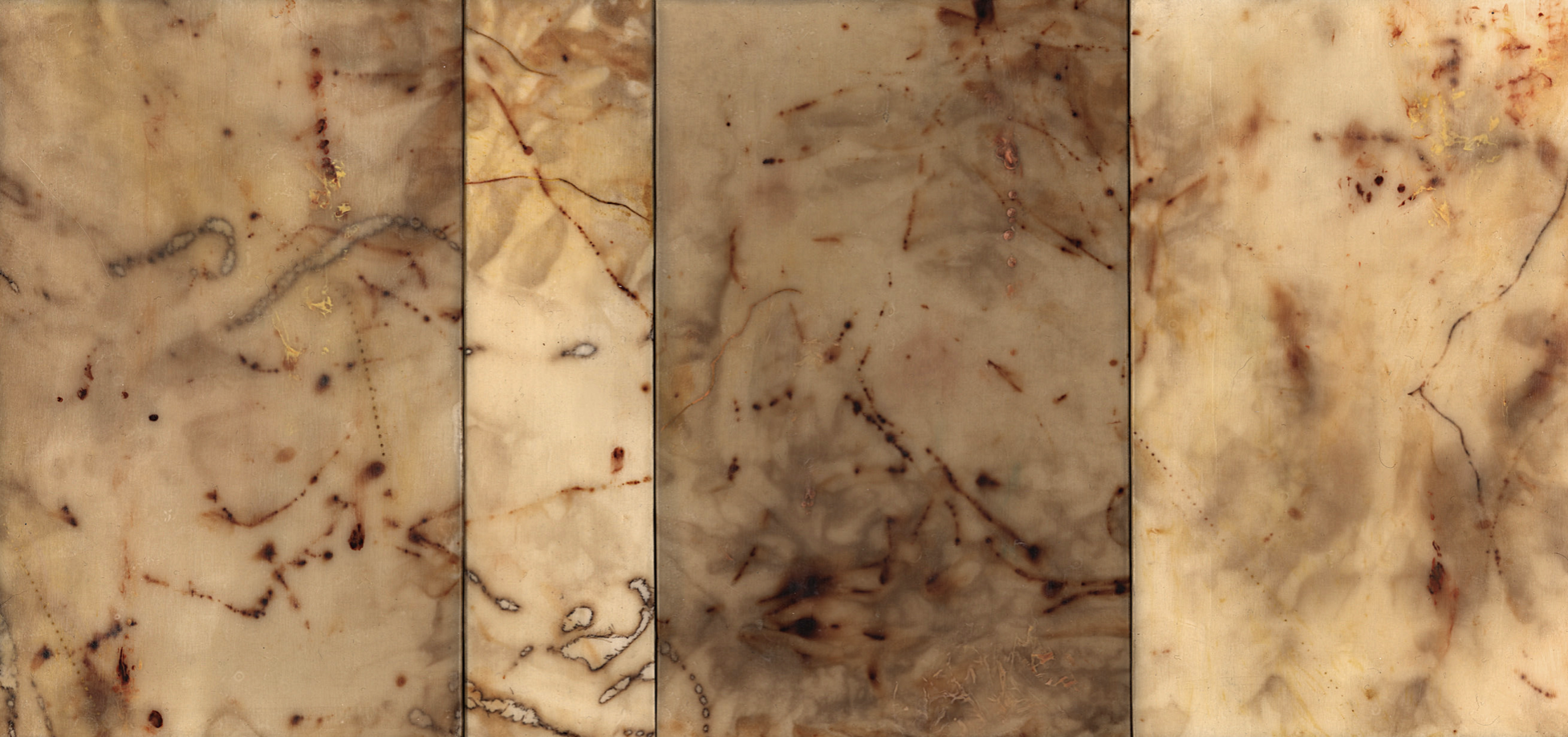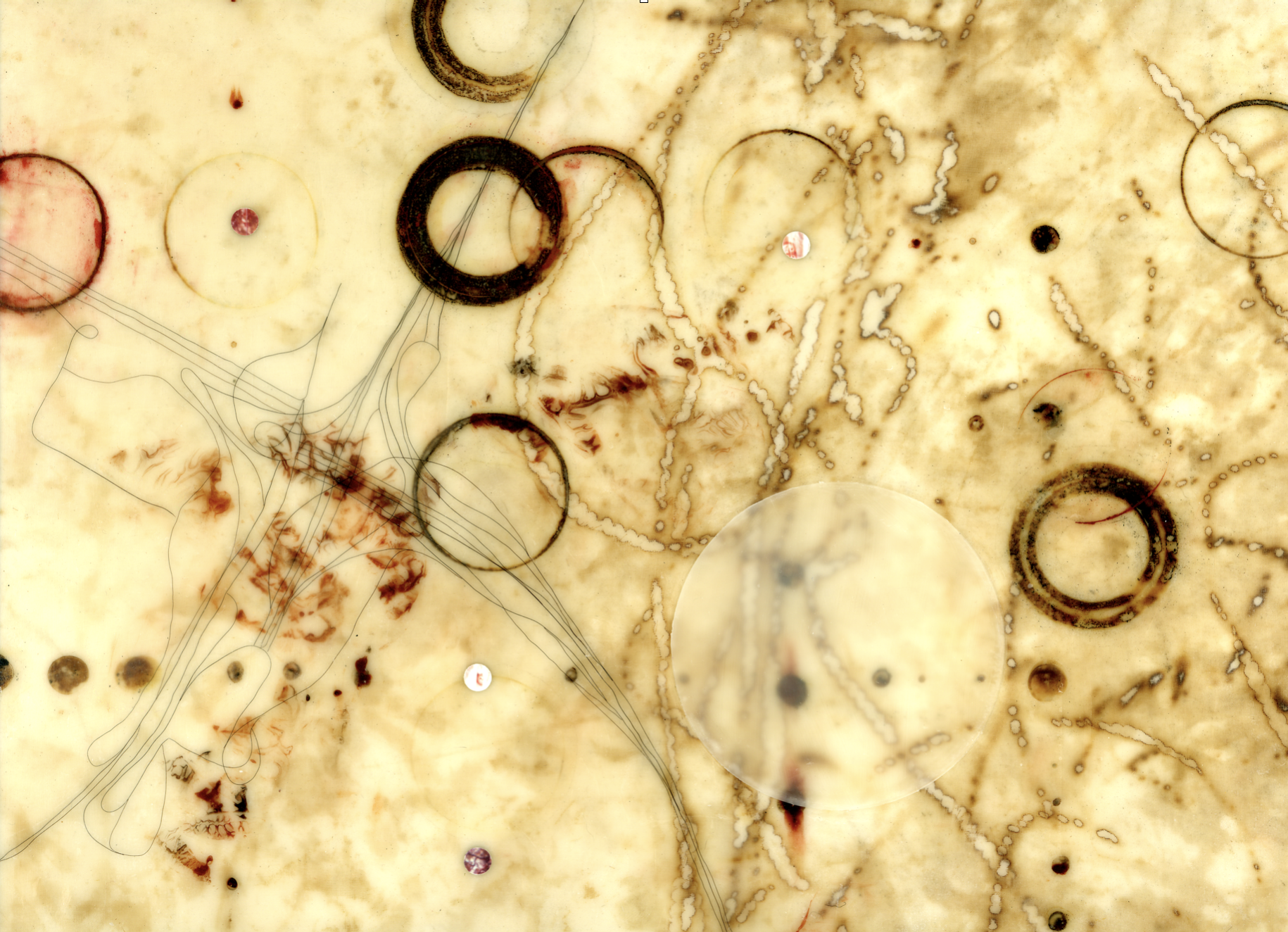Pyrography/Branding: Why and How I Use It in My Work
I’m an addict…there I said it. My drug of choice? Fire, smoke and the marks these processes create on paper, wood and fabric. As an Aries, I was born in fire, but that’s not the only reason why I use it in my work.
I’ve been utilizing and teaching the process of branding in combination with encaustic for over 20 years, but I must give credit where it’s due. I learned about it from an amazing artist, Tremain Smith. Tremain was kind and generous enough to show me her tools and method during an open studio event in Philly and I’m forever in her debt because she opened the door to a most fascinating process. I went on to experiment with the process and developed my own way of working with it, read on to see why and how.
I use the terms Branding and Pyrography interchangeably, but this is not really correct. To clarify, Branding is a term I coined in relation to my work because it’s very similar to the actual process of branding. I use a propane torch to heat steel objects to red hot, then hold them to wood or paper to create a mark, just like branding any mark. Many different patterns can be achieved through branding depending on the type of tool, the object being used to brand and the substrate being branded. Colors range from yellows to rusts to browns and blacks. Pyrography or wood-burning is a traditional art form that has been practiced since ancient times to decorate wooden objects with sharp-ended heated metal tools. Pyrography tools are shaped wires that serious pyros use to make highly detailed works of art (pictured below). Wood-burning tools can be found at most art and hobby stores and consist of an electrified handle with interchangeable tips, usually sold in sets in an incredible range of designs. These are very easy to use as they don’t require much skill to make something pretty cool and are even fun for kids. I often encourage my students to start out with these tools and work up to the pyrography set when they’re comfortable. A video of me using a wood-burning tool, another of me using my fancy pyrography set and a wild one of me branding and another using open flame to burn into a stack of paper.
Like most processes I use in my work, I developed the use of fire in graduate school. The inspiration for my work is rooted in the idea of creation and the cyclic nature of life. Further, my interests lie in the notion of imprinting, staining and marking as it relates to birth through to death and decomposition. More specifically, I’m interested in the physical mark and pattern of this cycle on the earth, body and landscape. Looking at these patterns on apps like GoogleEarth (images below-use left/right arrows to scroll images), I was mesmerized by the intricacies of the surface of our amazing earth. I desperately wanted to replicate these marks, but when I tried, the results looked forced, hesitant and just wrong. The marks on the earth were created by time-based process and I needed to find a process that would do this. At the time, I was experimenting with the Devore process (literally means to Devour; removing cellulose in fabrics with a chemical) and the burns it created were very much like what I was seeing in the images. I didn’t really feel comfortable working with the Devore chemicals and when I literally discovered fire, I was in love.
Yann Arthus-Bertrand, Ashes of a Tree, 2005, Ivory Coast, Size Unknown
The image to the right embodies all of my interests as it illustrates the complete cycle of life as well as the mark. This is an aerial image of a tree that had burned completely and as it fell, the ashes retained the original shape of the tree. In this image you can see the life and growth of the tree, the death of the tree and the life around it that will eventually grow from its ashes. I like this image a lot because it sort of illustrates the cycle of life and the physical mark it creates. I consider fire a life form with it’s own cycles--It breaths, it eats, it destroys and it dies-and even though it can be extremely destructive, it actually creates life through this destruction. To me, fire is another form of drawing and I use heated tools, heated metal pieces and actual flame to brand and make marks in my paintings.
When I combined the branded marks with those of other natural processes, such as composting (staining with nature) and rust printing on fabric and paper, I had finally struck gold. These processes worked to create marks using time and the elements, just like the natural processes do on the earth’s surface. Additionally, the notion of imprinting, staining and marking is manifest and is also acting as a metaphor for natural cycles. Now, more than 22 years later, I’m still finding interesting ways to utilize these processes and looking forward to a lifetime of discovery. Please see the gallery below for some of my work combining all of these process and more with encaustic (use left/right arrows to scroll images).
Want to know more about these and other processes I use in my work? I’ve put it all together in one comprehensive virtual, self-guided course called Mixed-Media Mark-Making Mastery and you’re in luck because registration just opened today! Check out the workshop web page to see what it’s all about—the first lesson drops April 17. If you’re on the fence and want to see more, sign up to attend a FREE slide lecture I’m presenting on April 15 at 7pm EST explaining the materials and techniques taught in this course, with examples of work from contemporary artists who use them in their work.

